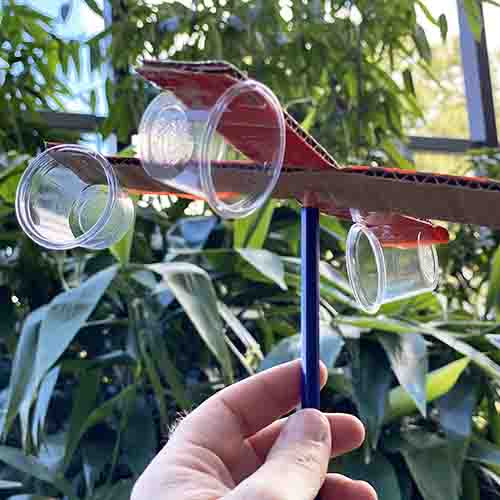Anemometers Revealed: Recognizing Their Value in Environmental Monitoring and Safety Measures
The function of anemometers in environmental surveillance and security actions is commonly ignored, yet their value is indisputable. From meteorology to air travel safety, anemometers play a critical function in offering exact data that educates decision-making processes and enhances total security.
History of Anemometers
The advancement of anemometers can be traced back to the ancient civilizations where rudimentary wind gauging gadgets were first used. These early wind dimension devices laid the foundation for the growth of a lot more advanced anemometers with time. One of the earliest known anemometers was the hemispherical cup anemometer designed by Leon Battista Alberti in the 15th century. This style contained 4 hemispherical cups that gathered wind power, offering a dimension of its intensity based on the speed of turning.
In the 18th century, the popular scientist John Thomas Romney Robinson presented the Robinson anemometer, which included four hemispherical cups mounted on horizontal arms that prolonged from a main axis. This layout ended up being a requirement in atmospheric measurements because of its precision and reliability. For many years, developments in modern technology led to the development of more modern anemometers, including ultrasonic anemometers and laser Doppler anemometers, using raised accuracy and efficiency in determining wind speed and instructions. The background of anemometers showcases an impressive trip of innovation and progress in the field of meteorology.
Types of Anemometers
Throughout the area of meteorology, numerous types of anemometers have actually been developed to properly gauge wind speed and instructions. Sonic anemometers make use of ultrasonic signals to determine wind speed and instructions accurately. Hot-wire anemometers run based on the concept that the cooling impact of wind on a warmed wire is proportional to the wind rate.
Applications in Meteorology
Having reviewed the various types of anemometers used in weather forecasting for gauging wind speed and direction, it is crucial to explore their functional applications in the area. Anemometers play a crucial function in meteorology by supplying real-time and exact information on wind conditions (anemometer). Meteorologists use anemometers to keep track of wind rate and instructions to anticipate climate patterns, concern warnings for severe weather condition events like hurricanes, storms, and storms, and examine atmospheric conditions for aviation safety and security
In weather forecasting, anemometers aid in understanding local and local wind patterns, which are vital for predicting climate modifications and figuring out climatic trends. These tools are likewise used in research to research microclimates, metropolitan heat islands, and air contamination dispersion. Additionally, anemometers are used in farming to maximize plant monitoring techniques, such as watering and chemical application, based on wind problems.
Significance in Aviation Safety And Security
An important aspect of making certain air travel safety hinges on the meticulous surveillance of wind conditions making use of anemometers. Anemometers play a critical function in aeronautics by offering real-time data on wind rate and direction, helping pilots in making informed decisions throughout take-off, trip, and landing. Unforeseeable and solid winds can substantially impact aircraft procedures, making it vital for aviation authorities to count on exact wind measurements to make sure the safety her response and security of travelers and crew.

In the vibrant environment of aeronautics, where also minor adjustments in wind speed and instructions can have profound results, anemometers stand as essential tools for promoting protected and risk-free air travel.
Function in Environmental Research
Just how do anemometers add to improvements in ecological research? Anemometers play an essential role in ecological study by supplying necessary data on wind speed and direction. This details is important for recognizing different atmospheric procedures, such as air contamination diffusion, weather patterns, and environment change. By properly measuring wind features, anemometers help researchers analyze the motion of toxins in the air, analyze the influence of industrial discharges, and predict the spread of impurities in the atmosphere.


Final Thought
In verdict, anemometers have played a critical function in environmental tracking and security measures. Recognizing the relevance of anemometers is important for properly determining wind speed and direction, which is vital for predicting climate patterns, ensuring secure view it now air travel operations, and performing environmental researches.
One of the earliest recognized anemometers was the hemispherical cup anemometer developed by Leon Battista Alberti in the 15th century. Over the years, developments in modern technology led to the growth of more modern-day anemometers, including ultrasonic anemometers and laser Doppler anemometers, supplying enhanced accuracy and performance in measuring wind rate and direction. Hot-wire anemometers run based on the principle that the cooling result of wind on a warmed cord is proportional to the wind rate. Meteorologists utilize anemometers to check wind speed and instructions to forecast climate patterns, issue cautions for extreme climate events like tornadoes, tornados, and hurricanes, and evaluate climatic conditions for aviation safety and security.
Comprehending the value of anemometers is vital for properly measuring wind rate and direction, which is essential for forecasting climate patterns, making sure safe aviation procedures, and conducting environmental research studies. (anemometer)